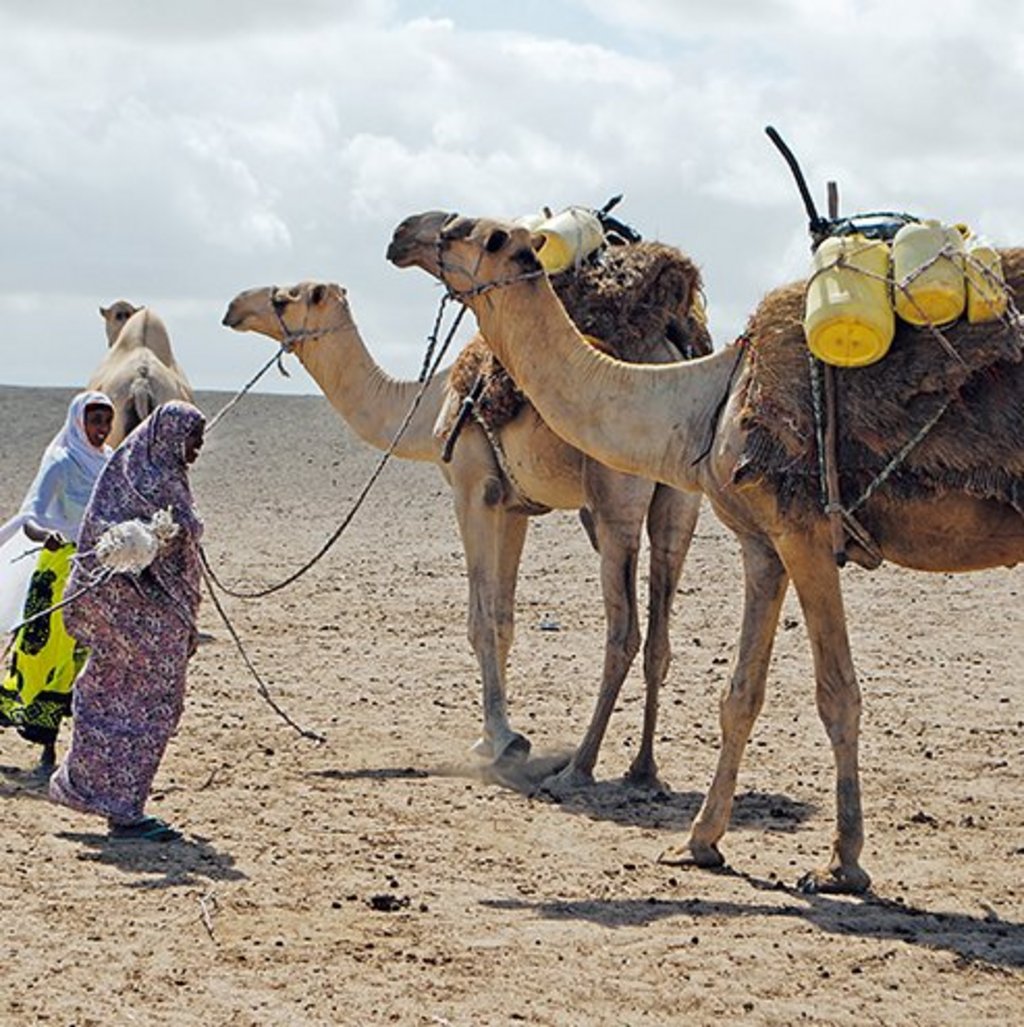Integrated camel management in Kenya
What do we see on the project photo?
Two members of a women's group that received camels from the project are transporting camel milk to the next collection point in the drylands of Isiolo, Kenya. The women also received training on how to handle camels, hygienic milking, treating camel diseases and business and group formation skills.
How would you explain to a child what the project is doing?
Camels can live in very dry areas like Isiolo in East Africa. They can eat bushes and survive a long time without water. We gave camels to women so that they can produce their own milk. We also helped women in forming groups, so that they can transport and sell milk to the city to earn some money.
What is the project’s main objective?
Increased food & nutrition security and incomes for pastoral households through: (a) strengthened integrated camel management, (b) value and hygiene chain development, (c) participatory disease surveillance to improve animal health .
Why is the project important?
Global warming has already lead to longer drought periods and unpredictable rains, and it is predicted that these problems will only exacerbate. Camels are better adapted to these new conditions. Resilience to increasing shocks is key for the pastoralist communities if they still want to be able to live in this area in the future.
What has been the most positive moment during the project?
In the beginning of the project, participants struggled to maintain the camels, as many of them did not get pregnant and hence gave no milk. This changed when our groups obtained male camels to “serve” the herd’s females. From then on, the groups milk production shot up, and herds are now growing.
What have been the biggest challenges encountered in the project?
Despite several trainings, hygienic milk handling along the value chain is still a challenge. Traders tend to change their behaviour very slowly, unless faced with strict regulation. In order to achieve better milk safety for consumers, collaboration with various government bodies is needed – but the process is slow.
Which is the most important lesson learnt from the project?
Groups are stronger than individuals. In the beginning, the project gave camels to individuals. Many of them could not maintain the animals and sold them. Therefore, subsequent phases supported and trained camel holders in forming groups – all of these are still intact and, in fact, growing.
About the project
Title:
UPICAM - Upscaling of integrated camel management for livelihoods and collaborative disease surveillance for animal health
Contacts:
Simon Gottwalt, Programme Officer Biovision
Sara Imbach, Programme Officer VSF Suisse
Duration:
2011-2021
Funding institutions:
Biovision
Implementing institutions:
VSF Suisse, Biovision
Further information:
https://www.biovision.ch/projekte/kenia/kamelefuertrockengebiete/

